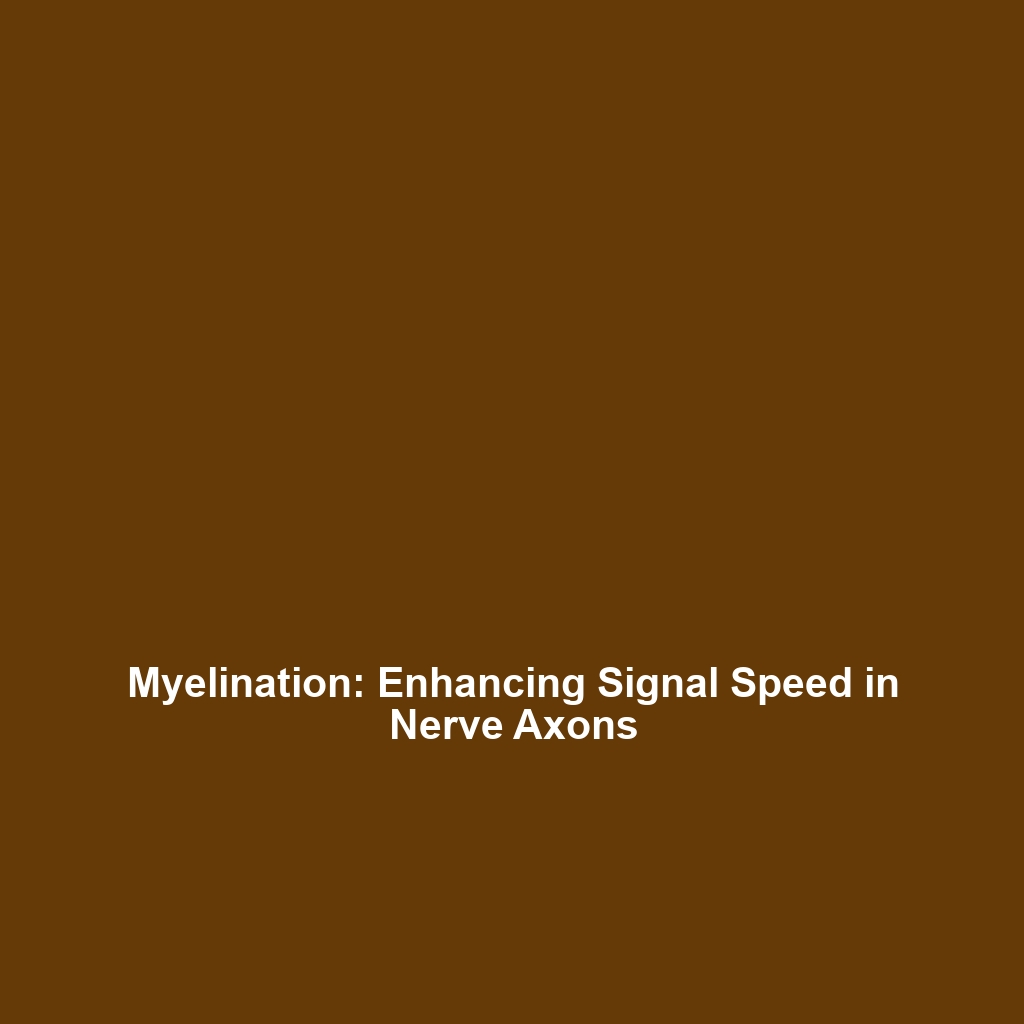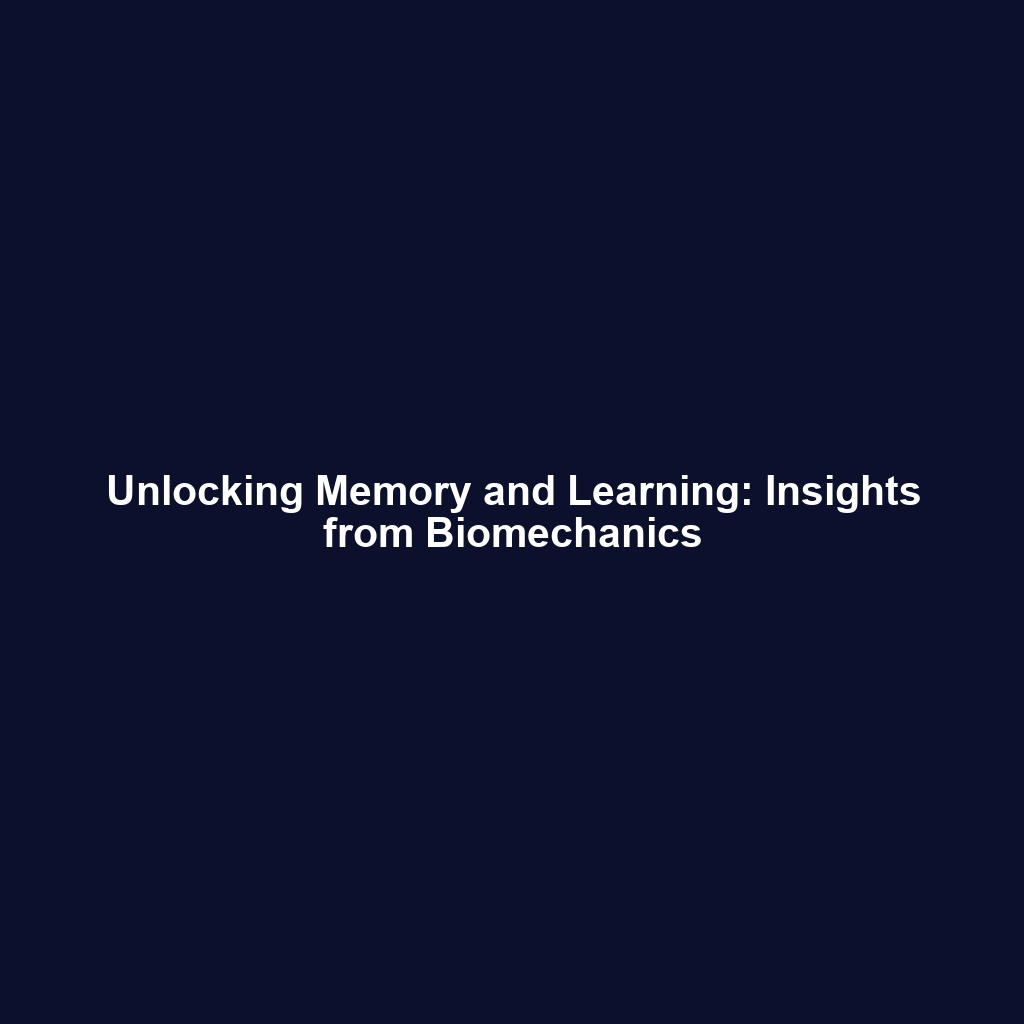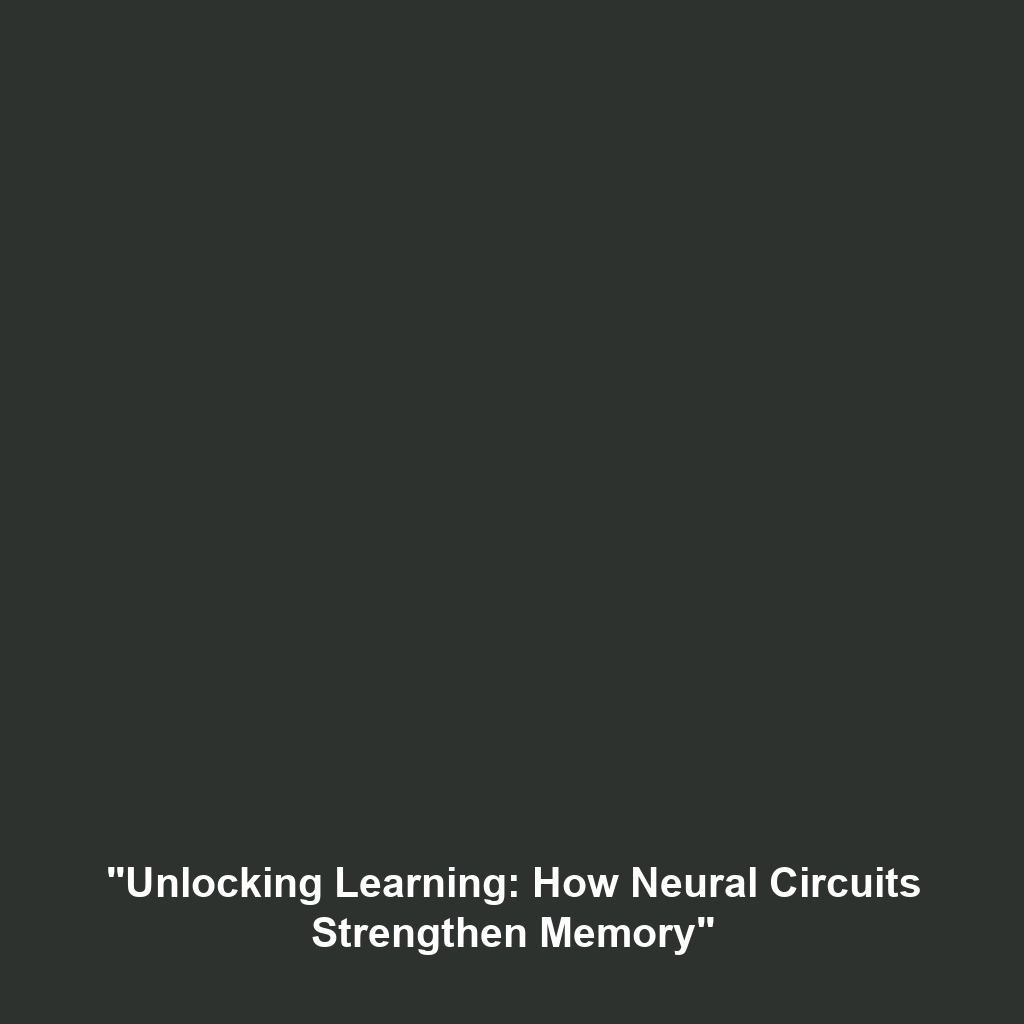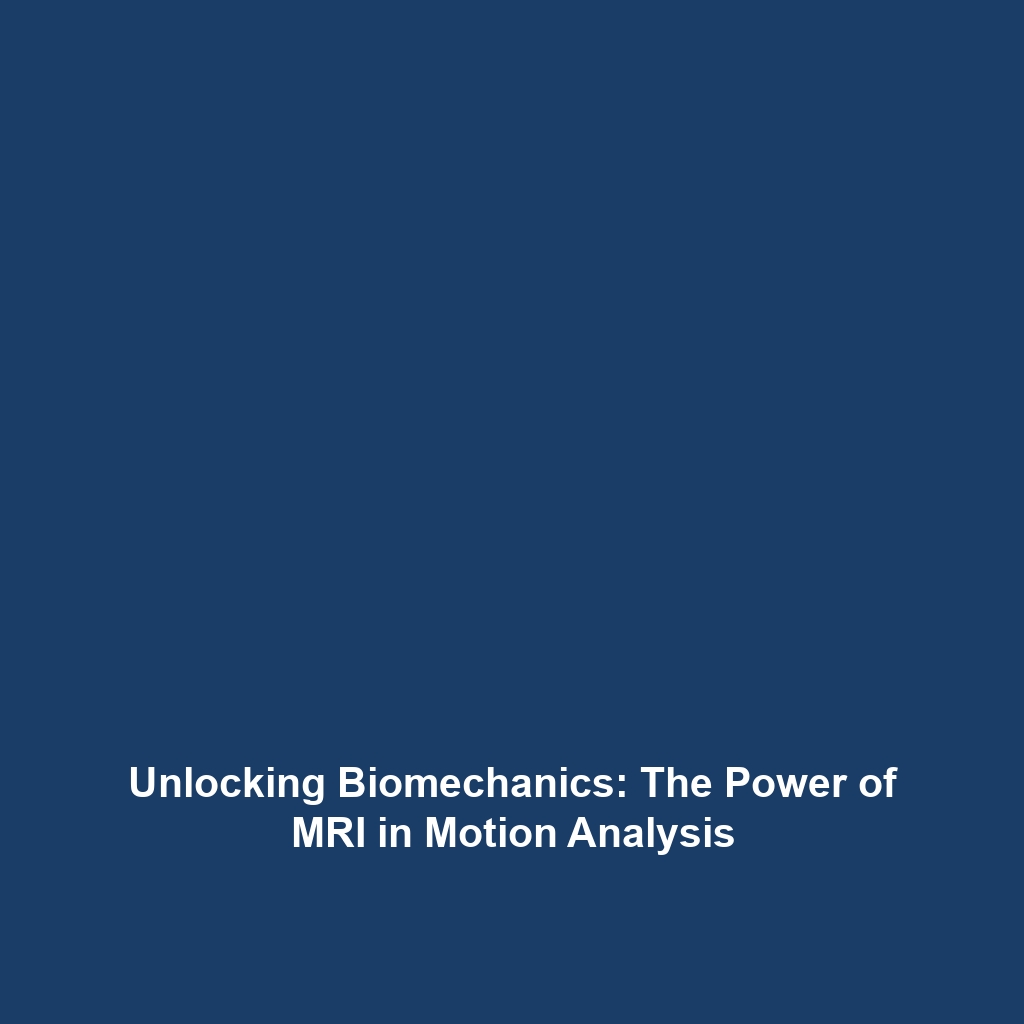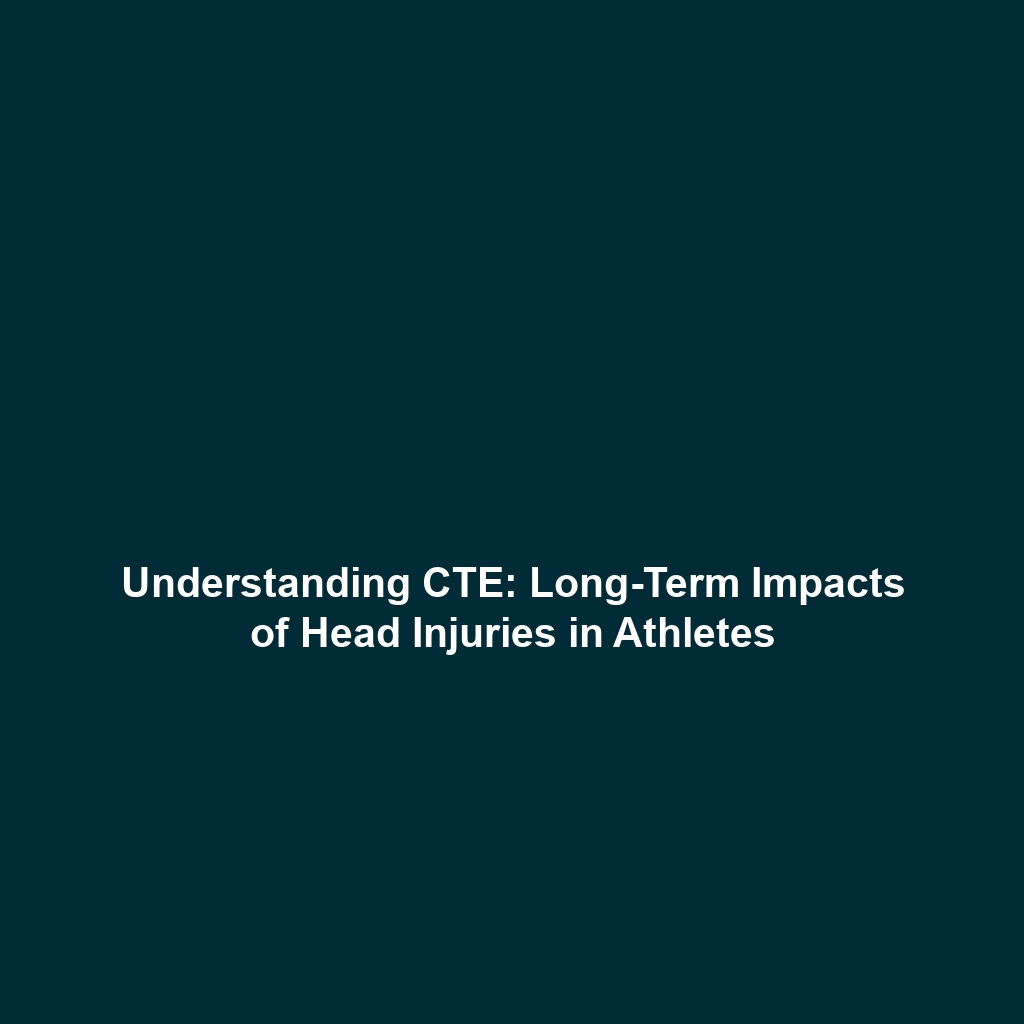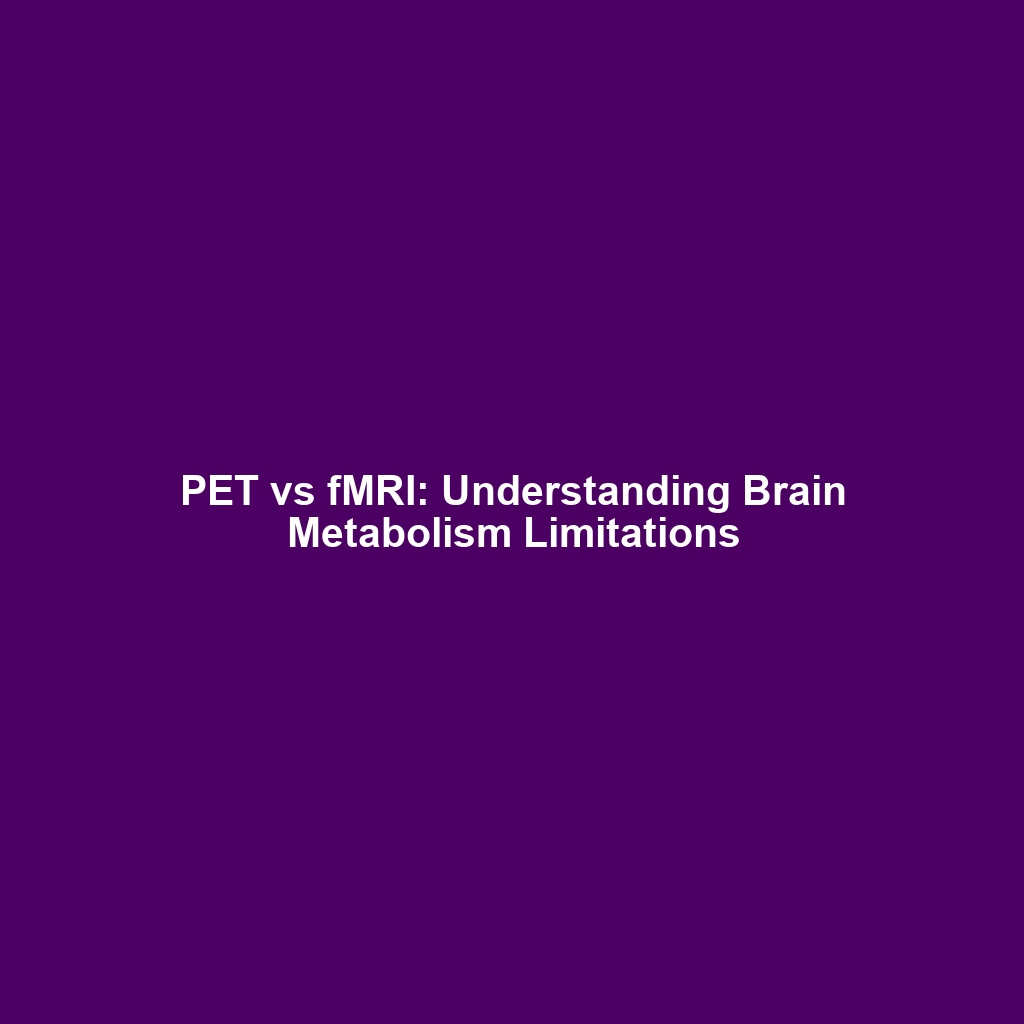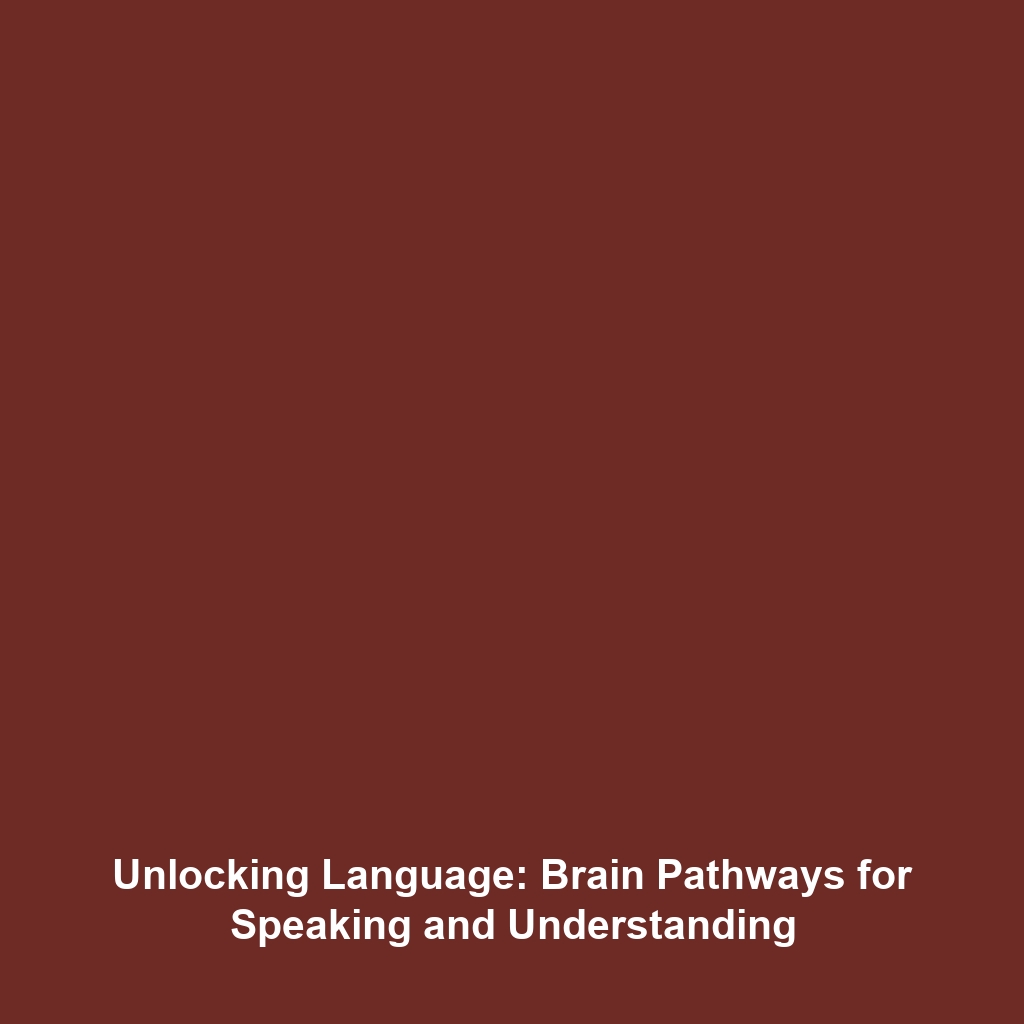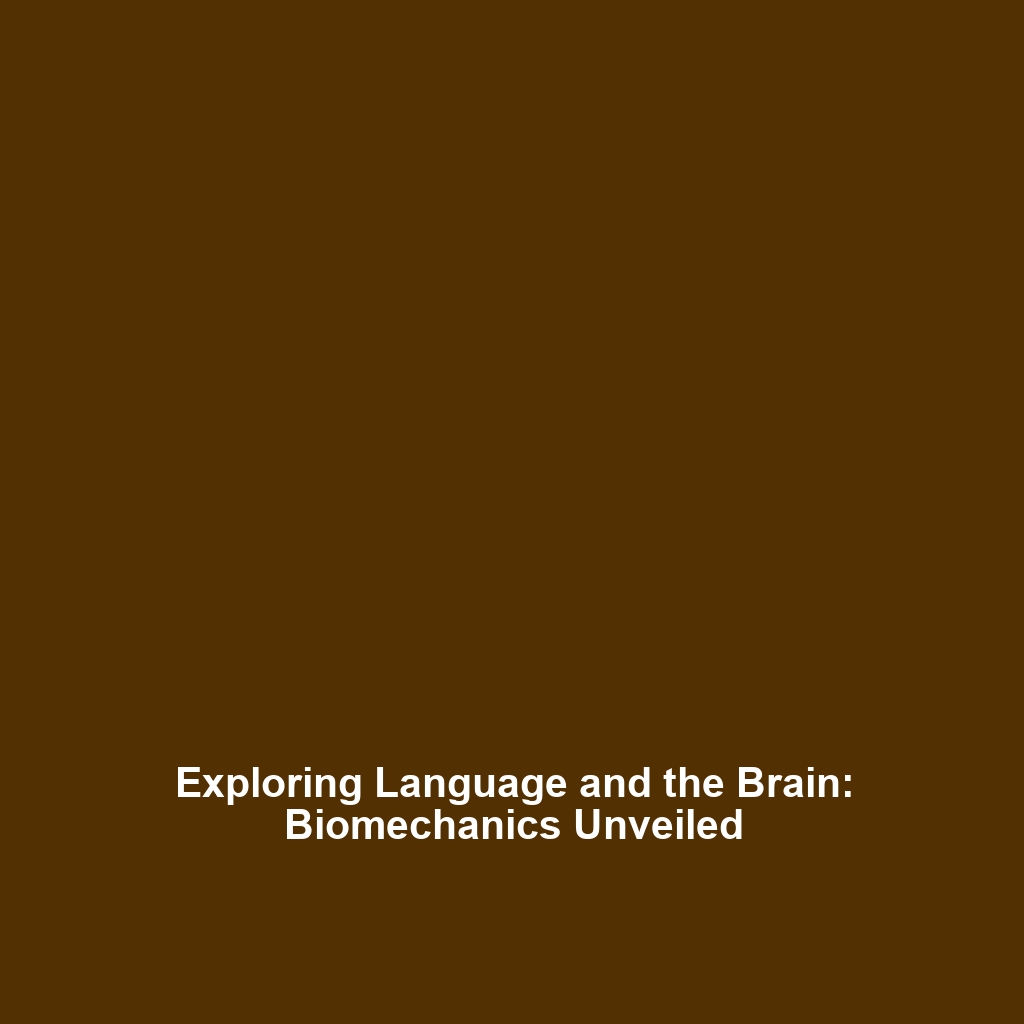Myelination: The Process of Insulating Axons to Increase the Speed of Signal Transmission
Introduction
Myelination is a crucial biological process involving the formation of myelin sheaths around axons, significantly enhancing the speed of electrical signal transmission in the nervous system. This insulating layer not only optimizes the efficiency of neuronal communication but also plays a pivotal role in various aspects of biomechanics, including motor function and reflexes. Understanding myelination is essential for uncovering the complexities of neurobiological mechanics and offers insight into several health conditions related to nerve function.
Key Concepts
The Myelination Process
Myelination begins with oligodendrocytes, which produce myelin in the central nervous system, and Schwann cells, responsible for myelination in the peripheral nervous system. The process involves several key stages:
- Axonal Identification: Oligodendrocytes and Schwann cells identify the axons they will insulate.
- Myelin Sheath Formation: These cells wrap around the axons, creating múltiple layers of membrane.
- Node of Ranvier Development: Gaps are left between the myelin sheath, known as nodes, which facilitate rapid signal conduction via saltatory conduction.
Significance to Biomechanics
In the realm of biomechanics, myelination significantly affects the speed of nerve impulses, influencing motor skills and coordination. An efficient nervous system is vital for smooth biomechanical actions such as walking, running, or manipulating objects, thereby linking myelination to physical performance and rehabilitation outcomes.
Applications and Real-World Uses
Understanding myelination has led to various real-world applications, especially in the field of biomechanics:
- Neurological Rehabilitation: Insights into myelination aid in developing rehabilitation strategies for individuals recovering from neurological injuries or diseases.
- Sports Science: Information on how myelination affects muscle response times can improve training regimens for athletes.
- Prosthetics Development: Enhanced understanding of nerve signal transmission supports the design of prosthetics that interact seamlessly with muscle and nerve systems.
Current Challenges
Despite significant advancements in the study of myelination, several challenges remain:
- Understanding the mechanisms behind demyelination and its effects on the body.
- Developing effective treatments for diseases like multiple sclerosis, where myelination is compromised.
- Investigating the variability in myelination across individuals and its implications for personalized medicine.
Future Research and Innovations
The future of myelination research is promising, focused on several innovative approaches:
- Gene Therapy: Potential treatments aiming to enhance myelin repair processes in cases of demyelinating diseases.
- Nanotechnology: Utilizing nanomaterials to stimulate myelination and improve recovery outcomes post-injury.
- Neuroprosthetics: Advancements in technology that may allow interfacing between prosthetics and nervous systems through improved signal transmission.
Conclusion
In summary, myelination plays a vital role in enhancing the speed of signal transmission in the nervous system, with profound implications in the field of biomechanics. Continued research and innovation in this area will not only deepen understanding of neurological function but also open up new avenues for treatment and rehabilitation. For more insights into related topics, explore our articles on Neurological Rehabilitation and Biomechanics in Sports Science.
